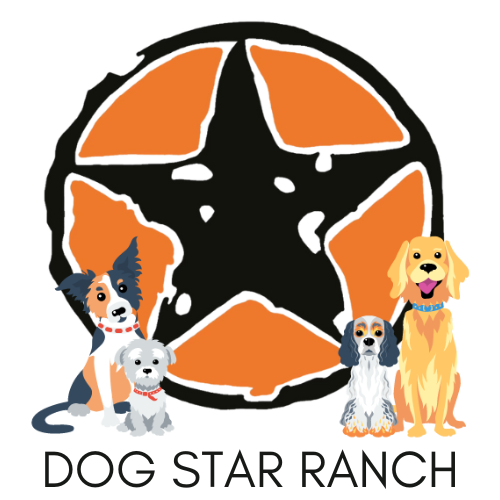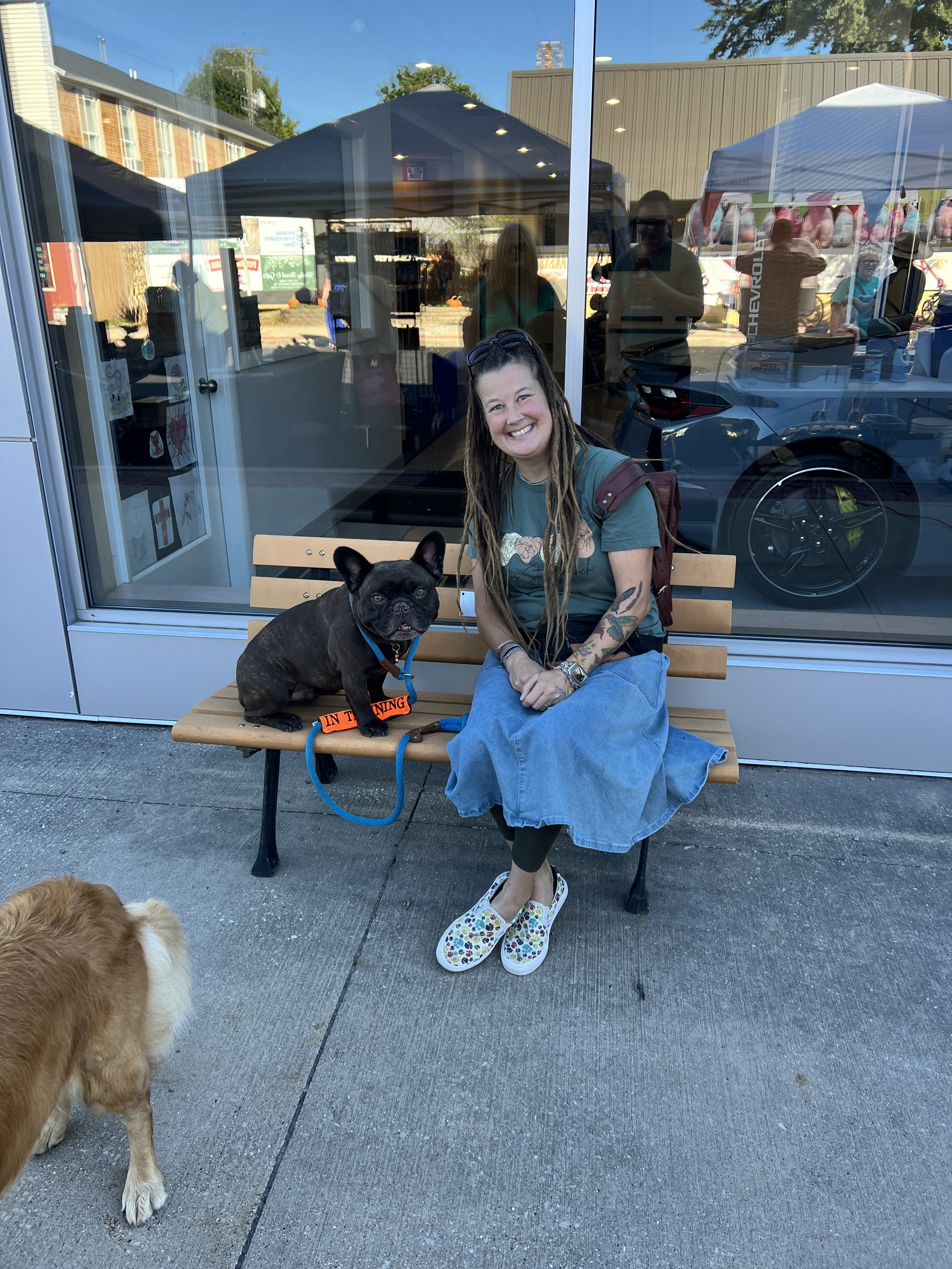Responsible Pet Ownership: Key Aspects Every Pet Parent Should Know
As a pet owner, it’s important to recognize that caring for an animal involves much more than just feeding and playing. Responsible pet ownership is about providing a well-rounded, healthy lifestyle for your dog, ensuring their needs are met physically, mentally, and emotionally. And since February is Responsible Pet Owner’s Month, we thought we’d share some key aspects of responsible pet ownership.
BASIC NEEDS
A key aspect of this is proper diet and nutrition — ensuring your dog gets a balanced diet tailored to their size, age, and health requirements. Look for food that meets AAFCO (Association of American Feed Control Officials) standards, which define essential nutrients like proteins, fats, vitamins, and minerals. These nutrients are vital for everything from muscle maintenance to skin health and immune functions. It’s also important to feed your dog according to their life stage, as puppies and senior dogs have different nutritional needs.
AAFCO guidelines are just that, guidelines. Although it’s important to make sure that your dog’s food is meeting the AAFCO standards, they are just the general basis for the nutritional content of commercial pet foods. Your dog may need more or less depending on their health issues.
Alongside a healthy diet, water is critical—dogs need constant access to fresh water to stay hydrated and support essential bodily functions. The general guideline is that dogs should drink around 2.5 times the amount of dry food they consume in water daily, but this can vary depending on factors like size, age, and activity level.
Dogs also need appropriate living space to thrive, which includes a quiet, safe environment, access to fresh water, and enough room to move around comfortably. A designated bathroom area, space for exercise, and a cozy resting spot are all part of creating a happy, stress-free environment.
Interested in learning more about the food you’re feeding your dog? Check out Dog Food Advisor for reviews and advice on the best pet foods!
HEALTHCARE & GROOMING
Proper healthcare and grooming are vital to your dog’s overall well-being, and regular attention to these aspects can help prevent many health issues down the line.
Routine veterinary visits are an essential part of responsible pet ownership. Schedule wellness exams at least once a year, or more frequently if your dog is older or has existing health conditions. During these checkups, your vet will assess your dog’s overall health, check vital signs like heart rate and temperature, evaluate their weight and diet, and update vaccinations. Regular vet visits help catch potential problems early, leading to quicker and more effective treatments.
Spaying or neutering your dog not only prevents unwanted puppies but also has health benefits. For females, spaying reduces the risk of uterine infections and certain types of cancer, while neutering males can prevent prostate issues and certain behavioral problems. In addition to these health benefits, spaying or neutering helps with pet overpopulation, reducing the number of animals that end up in shelters.
Grooming is an important part of maintaining your dog’s health, comfort, and cleanliness. Regular grooming helps prevent mats, tangles, and skin infections, and keeps your dog looking and feeling their best.
Regular nail trims are essential for your dog’s health. Overgrown nails can alter the natural alignment of your dog’s paw, causing strain on their joints and leading to discomfort. Long nails can cause pain, and in extreme cases, they may even break or split. Generally, most dogs require a nail trim every 4 to 6 weeks, but this can depend on their breed, activity level, and rate of nail growth.
Baths and grooms are more than just about keeping your dog smelling fresh, they have important health benefits as well! Regular baths help control shedding, prevent medical problems, and improve your dog’s skin health. Routine baths allow you, or a professional, to check your dog’s skin, ears, and teeth for any signs of issues like irritation, infections, or hot spots.
Dogs with long or curly coats often need more frequent grooming to prevent mats and tangles, while short-haired dogs might require fewer baths, especially if they’re mostly indoors. Active dogs that spend time outdoors playing in the mud and dirt may also need more frequent baths. Typically, dogs should be groomed every 4 to 6 weeks, but this can vary depending on factors like coat type, activity level, and specific hygienic needs.
At Dog Star Ranch, you can enjoy a 10% discount on grooming services (Full Grooms and Mini-Grooms only) if you book your next grooming session within 6 weeks!
By staying on top of your dog’s healthcare and grooming, you’re ensuring that they remain healthy, happy, and comfortable throughout their life. Regular veterinary checkups, nail trims, and grooming sessions are key to maintaining your dog’s well-being and preventing potential health problems.
TRAINING & BEHAVIOR
Training and socialization are two of the most important aspects of raising a well-rounded dog. Not only do they shape your dog’s behavior, but they also help build a deep bond between you and your dog, ensuring a happier and more harmonious relationship.
Obedience training is essential for teaching your dog what is expected of them in different situations. It helps ensure your dog behaves appropriately around people, other dogs, and in public spaces. By reinforcing basic commands like sit, stay, and come, you can also prevent destructive behaviors and reduce the risk of dangerous situations. Most importantly, training boosts your dog’s confidence by helping them navigate the world with clear boundaries. The more consistent you are with training, the more your dog will learn, giving them the tools to handle various experiences and environments with ease. Additionally, training helps you understand your dog better, including their body language and what motivates them. But training doesn’t stop once your dog learns basic commands. It’s a lifelong process that evolves as your dog grows and encounters new challenges. Whether it’s refining old behaviors, learning new commands, or adapting to new environments, continuous training ensures that your dog remains well-behaved and responsive throughout their life.
Proper socialization is crucial at any stage of a dog’s life, whether they’re a young puppy or a senior dog. Exposing your dog to different people, places, and situations helps them develop social skills and reduces the likelihood of fear or anxiety-related behaviors.
Curious to see how socialized your dog is? Check out this Socialization Checklist!
Importance of Socialization
Developing Social Skills: Through regular socialization, dogs learn how to communicate with other dogs and humans through body language, vocalization, and play
Reducing Fear, Anxiety, & Behavioral Issues: Dogs that aren’t socialized may become fearful or anxious around unfamiliar situations, leading to aggressive or defensive behaviors. Proper exposure helps them feel more confident and comfortable in new settings
Positive Play Behavior & Boundaries: Socialization teaches dogs appropriate play behavior, like how to take turns, when to initiate play, and when to respect another dog’s space
Improved Communication Skills: Dogs learn to read and respond to body language and vocal cues, enhancing their ability to communicate effectively with other dogs and people
Every dog has a different level of comfort when it comes to interacting with others. Some dogs are highly social, while others may be more selective. The level of social tolerance can depend on factors like training, handling, genetics, and even health status (such as stress or pain). Understanding where your dog falls on the social spectrum helps guide your interactions with them and ensures that they’re comfortable in social settings.
Puppyhood is the ideal time to start socializing your dog. During the first 12 weeks of life, puppies are especially impressionable, and early, positive exposure to new people, environments, and experiences helps them become more confident and well-adjusted adults. Proper socialization means not just meeting other dogs but also introducing puppies to new sights, sounds, and situations in a safe, controlled way.
To socialize your puppy effectively, you should:
Make it positive: Use treats and praise to help them associate new experiences with something fun
Take it slow: Avoid overwhelming them by introducing too much too quickly. Short, positive sessions are key
Expose them to new environments: Once your puppy is comfortable with basic experiences, take them to public places like pet stores, parks, or different streets to further expand their comfort zone
Attend puppy classes: Puppy classes not only teach basic commands but also provide opportunities for socialization with other puppies
Schedule playdates: Playdates with dogs of similar size and temperament help build their social skills and comfort levels
Weren’t able to socialize your dog as a puppy? It’s never too late to work on socialization, even for adult dogs! Start by setting realistic goals for your dog and creating a calm, controlled environment where they can feel safe. Start slow, making sure your dog is comfortable before introducing new experiences or situations. Pay attention to their body language and give them plenty of praise when they show good behavior. Identifying your dog’s comfort zone is key—recognizing when they are stressed and backing off can prevent overwhelming them and help ensure gradual progress.
If you’re unsure where to start, Dog Star Ranch offers a doggie daycare where puppies and dogs can learn to play (or just be around) others in a safe, controlled environment based on size, age, and temperament. Click HERE to learn more about our doggie daycare program!
BREED-SPECIFIC NEEDS
Every dog breed is unique, and understanding the specific traits, behaviors, and care requirements of the breed you’re bringing into your home is key to ensuring a happy and healthy relationship. Dog breeds are often categorized based on the tasks they were originally bred to perform, and their physical and behavioral characteristics are deeply influenced by this history. Whether a dog was bred for hunting, herding, guarding, or simply companionship, these traits significantly impact their energy levels, exercise needs, temperament, and grooming requirements.
For example, hunting breeds like Labrador Retrievers or German Shorthaired Pointers are typically high-energy and require daily walks and mental stimulation. On the other hand, breeds bred for companionship, such as Malteses or Shih Tzus, are generally more sedentary and enjoy cuddling and relaxed environments.
It’s important to choose a breed that matches your lifestyle to ensure that both you and your dog are happy. However, it’s also important to remember that while breeds have tendencies, individual personalities, upbringings, and experiences can vary widely, so no two dogs—even within the same breed—are exactly alike.
Understanding the genetic makeup of a dog can give insight into why they behave the way they do. Genetic predisposition plays a significant role in determining a dog’s tendencies, but it’s not the only factor. The dog’s environment, training, and socialization experiences all play crucial roles in shaping behavior. By understanding the genetic basis of behavior, you can better manage and train your dog in a way that respects their natural instincts.
COMMITMENT & CONSIDERATION
Owning a dog is a long-term commitment that requires careful thought, time, effort, and financial resources. Unlike some other pets, dogs are deeply social animals with emotional, physical, and mental needs that must be consistently met throughout their lives. Bringing a dog into your life means making a commitment to provide care, love, and attention for years to come.
Dogs typically live anywhere from 10 to 15 years, depending on their breed, size, and health. During this time, you’ll need to meet their evolving needs, which can change from puppyhood to senior years. This commitment involves more than just feeding and walking your dog; it includes emotional support, training, health care, and adjusting your lifestyle to accommodate them.
Here are the key components of commitment:
Time: Dogs need daily attention and exercise, and their emotional needs require you to be present. They’re social animals and thrive on interaction with their humans. If your lifestyle involves long hours away from home, it’s crucial to plan for how your dog will be taken care of during that time (dog sitter, walkers, or daycare). Exercise is essential, not only to keep your dog physically fit but also to prevent boredom. Whether it’s walks, playtime, or training, your dog will need consistent attention
Financial: Owning a dog comes with ongoing costs. In addition to food, you’ll need to budget for vet visits, vaccinations, grooming, toys, training, and emergency care
Training: Dogs need positive discipline and consistent training to understand boundaries, expectations, and acceptable behaviors. Whether you are training a puppy or an adult dog, ongoing work is required to reinforce good habits and correct undesirable ones.
Lifestyle: Before getting a dog, consider how they’ll fit into your current lifestyle. Some dogs require more time, attention, and exercise than others. If you travel frequently or work long hours, it’s important to ensure your dog is cared for in your absence. Dogs also thrive on routine, so be prepared to stick to a schedule for feeding, exercise, and bedtime
Just like humans, dogs also have emotional needs. A dog’s emotional health is closely tied to their sense of security, attachment, and enrichment. Dogs need positive social interactions, stimulation, and consistent routines to feel emotionally fulfilled.
A Dog’s Emotional Cup
A dog’s emotional “cup refers to their threshold for emotional needs like companionship, attention, and security. When this cup is full, a dog is content and well-adjusted. However, if their emotional needs aren’t met, their cup can empty, leading to behavioral issues.
What empties a dog’s emotional cup?
Social isolation or prolonged confinement without stimulation
Overstimulation from too much exercise or lack of rest
Unpredictable training or inconsistent routines
Not addressing their physical or emotional needs, like hunger, boredom, or lack of attention
Signs of an empty emotional cup:
Restlessness or excessive barking
Over-reacting or shutting down in response to stimuli
Changes in behavior, such as hoarding resources, increased irritability, or a loss of appetite
What refills a dog’s emotional cup?
Engaging in “dog things,” such as sniffing, chewing, playing, and exploring
Unconditional love and attention from their owner
Freedom to move and explore in a safe environment
Predictable routines, like regular feeding times, walks, and play sessions
Having a safe, quiet space to rest and relax
A healthy dog needs both physical and mental stimulation. Boredom can lead to behavioral problems, such as chewing, excessive barking, or digging. It’s important to provide enough engagement to keep your dog mentally and physically satisfied.
How Much Exercise Does a Dog Need Every Day?
The amount of exercise a dog needs varies depending on several factors:
Age:
Puppies generally have a lot of energy but in short bursts. Their exercise might be in the form of play or shorter walks. Adult dogs need regular exercise, which can be adjusted based on their breed and energy levels. Senior dogs may slow down, but they still need daily activity, though it’ll be less intense.
Breed:
Active breeds (like Border Collies and Australian Shepherds) require more vigorous exercise, while calmer breeds (like Bulldogs or Basset Hounds) require less.
Health:
If your dog has health conditions (e.g., arthritis, heart disease, etc.), you’ll need to tailor their exercise to be gentler or more controlled. Mental stimulation through activities like puzzle toys or scent games can help keep them engaged if physical exercise is limited.
Personality:
Some dogs love exercise, while others might be more laid back. You need to find a balance that works for both you and your dog, taking into account their preferences and needs.
A dog is a companion for life. Building a strong bond with your dog involves more than just providing for their basic needs—it’s about nurturing the relationship and understanding their emotional world.
Fostering a healthy relationship includes…
Creating Rules & Boundaries: Dogs feel more secure when they know what to expect from their environment. Consistent rules help them feel safe and understand what’s acceptable behavior and what’s not.
Learn to Read Your Dog’s Body Language: Dogs communicate primarily through body language. By understanding their cues (like tail wagging, posture, or ear position), you can gauge how they feel and adjust your actions accordingly. If they’re feeling anxious or uncomfortable, you can help redirect their attention or remove them from a stressful situation.
Be Respectful & Kind: Dogs are sensitive to the tone of our voices and the way we interact with them. Speaking kindly and offering affection helps strengthen the bond and builds trust.
Spend Quality Time Together: Dogs need attention and interaction to feel loved and secure. Whether it’s playing, snuggling, or even just sitting with them, make sure to set aside time for bonding.
Establish a Routine: Dogs thrive on routines. Knowing when to expect walks, meals, and downtime gives them a sense of stability and security.
Create a Safe Space for Your Dog: If you’re going to be away, ensure that your dog has a place where they feel safe and comfortable, such as a crate, bed, or a home-away-from-home like Dog Star Ranch or pet sitter.
AT THE END OF THE DAY…
Being a responsible pet parent is about more than just providing food and water. It involves understanding your dog’s physical, emotional, and behavioral needs and making a long-term commitment to meeting them. From proper nutrition and regular vet visits to training and providing emotional support, every aspect of responsible pet ownership helps ensure your dog leads a happy, healthy life.
Happy Responsible Pet Owner’s Month!
















